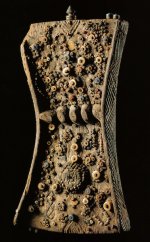There are more Proto-Indo-European verb complexities that have been reconstructed, like participles, verb moods / modes, and derivational suffixes.
 Proto-Indo-European nominals
Proto-Indo-European nominals
The PIE language had several noun cases: nominative (subject case), vocative (case of addressing someone, usually the nominative or a shortened version of it), accusative (target of action), dative (receiver of something, to-case), locative (at/in-case), ablative (away from something, from-case), genitive (relationship, of-case), instrumental (what's used for something, with-case).
PIE had three grammatical numbers: single, dual, and plural.
PIE originally had two grammatical genders, common and neuter, something preserved in Hittite. But common gender got split into masculine and feminine, what we see in most of the others of the older and more conservative IE languages.
Nouns could either have their number/case suffixes directly added on, making them root nouns, or a variety of suffixes, both consonants and vowels. Root nouns and some suffixed nouns often had ablaut and accent shifts in them, features that tended to be erased as nouns got forced into more regular paradigms in the dialects.
 Proto-Indo-European pronouns
Proto-Indo-European pronouns
PIE had personal pronouns only for the first and second persons, using demonstrative pronouns for the third person. It is rather hard to reconstruct the demonstrative ones, since the dialects show great variety. This is likely from formations that are roughly "this here" and "that there". PIE also had a reflexive "self" pronoun, a relative pronoun, and an interrogative/indefinite pronoun (who/what).
 Proto-Indo-European root
Proto-Indo-European root
PIE roots had a basic structure: consonant-vowel-consonant
There are lots of PIE roots like that, like *sed- "to sit" and *wes- "to clothe" (this root appeared in Latin, and was borrowed in suffixed form as "vestment")
PIE allowed for consonant clusters, with the consonants rising in sonority in an initial cluster and falling in sonority in a final cluster. Only one of each sonority class can appear in each cluster.
From highest to lowest sonority: (r, l, n, y), (m, w), (stops, s, laryngeals: H)
For instance *prews- "freeze" (yes, the English word comes from that PIE root)
Early PIE scholars reconstructed consonant-vowel and vowel-consonant roots. The former always had long vowels, while the latter often had short ones. That is explained by the laryngeal theory, the theory that some PIE consonants later dropped out. They were named after one linguist's theory that they were some throaty sounds found in some languages, but though that theory is nowadays not widely accepted, the name has stuck.
Like *ed- "to eat", nowadays *Hed-, and *dhê- "to put", nowadays *dheH-
There were further restrictions on possible roots, like of what kinds of consonants can coexist in the same root.
 Proto-Indo-European phonology
Proto-Indo-European phonology - what I'd discussed earlier in this thread
 Indo-European ablaut
Indo-European ablaut - those vowel shifts
 Proto-Indo-European accent
Proto-Indo-European accent - variable position in the word, a position that can often be reconstructed
 Indo-European sound laws
Indo-European sound laws - sound correspondences
 Proto-Indo-European language
Proto-Indo-European language - overview

